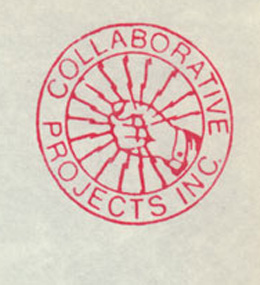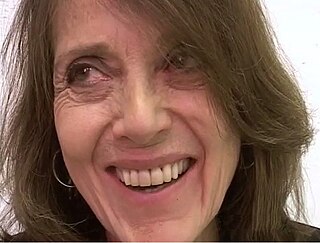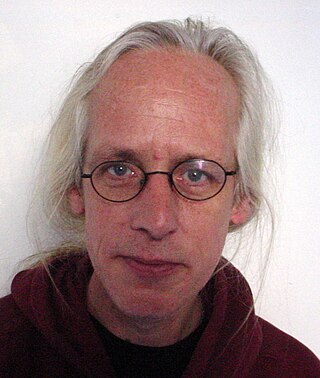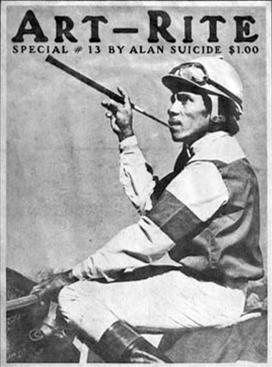
Robert L. Williams, often styled Robt. Williams, is an American painter, cartoonist, and founder of Juxtapoz Art & Culture Magazine. Williams was one of the group of artists who produced Zap Comix, along with other underground cartoonists, such as Robert Crumb, Rick Griffin, S. Clay Wilson, and Gilbert Shelton. His mix of California car culture, cinematic apocalypticism, and film noir helped to create a new genre of psychedelic imagery.

Colab is the commonly used abbreviation of the New York City artists' group Collaborative Projects, which was formed after a series of open meetings between artists of various disciplines.

Ronald "Ron" Davis is an American painter whose work is associated with geometric abstraction, abstract illusionism, lyrical abstraction, hard-edge painting, shaped canvas painting, color field painting, and 3D computer graphics. He is a veteran of nearly seventy solo exhibitions and hundreds of group exhibitions.
Walter Darby Bannard was an American abstract painter and professor of art and art history at the University of Miami.

Pat Lipsky is an American painter associated with Lyrical Abstraction and Color Field Painting.

Carlo McCormick is an American culture critic and curator living in New York City. He is the author of numerous books, monographs and catalogues on contemporary art and artists.

Thomas Lawson is an artist, writer, editor, and from 1991 to 2022 was the Dean of the School of Art & Design at California Institute for the Arts. He emerged as a central figure in ideological debates at the turn of the 1980s about the viability of painting through critical essays, such as "Last Exit: Painting" (1981). He has been described as "an embedded correspondent [and] polemical editorialist" who articulated an oppositional, progressive position for representational painting from within an increasingly reactionary art and media environment. Artforum called his approach to the medium "one of the most cogent and controversial" in the 80s.
Carrie Moyer is an American painter and writer living in Brooklyn, New York. Moyer's paintings and public art projects have been exhibited both in the US and Europe since the early 1990s, and she is best known for her 17-year agitprop project, Dyke Action Machine! with photographer Sue Schaffner. Moyer's work has been shown at the Whitney Biennial, the Museum of Arts and Design, and the Tang Museum, and is held in the permanent collections of the Metropolitan Museum of Art. She serves as the director of the graduate MFA program at Hunter College, and has contributed writing to anthologies and publications like The Brooklyn Rail and Artforum.
David Carrier is an American philosopher of art and cultural critic.
Alexi Worth is a painter, curator, art critic, and writer who is known for his conceptually rich and visually graphic works that address modern life and artmaking. He is currently represented by DC Moore Gallery, New York, NY.
Alan W. Moore is an art historian and activist whose work addresses cultural economies and groups and the politics of collectivity. After a stint as an art critic, Moore made video art and installation art from the mid-1970s on and performed in the 1979 Public Arts International/Free Speech series. He has published several books and runs the House Magic information project on self-organized, occupied autonomous social centers. His partial autobiography was published in 2022 in The Journal of Aesthetics & Protest as Art Worker: Doing Time in the New York Artworld. Moore lives in Madrid.
Coleen Fitzgibbon is an American experimental film artist associated with Collaborative Projects, Inc.. She worked under the pseudonym Colen Fitzgibbon between the years 1973–1980.

Art-Rite was a cheaply produced newsprint art magazine that was published from 1973 to 1978. Located in downtown New York City, it was distributed freely there. Its editors were Mike (Walter) Robinson, Edit DeAk, and Joshua Cohn. Cohn dropped out of Art-Rite relatively early.
Amy Feldman is an American abstract painter from Brooklyn, New York.

The Real Estate Show was a squatted exhibition by New York artists' group Colab, on the subject of landlord speculation in real estate held on New Year's Day in a vacant city-owned building at 123 Delancey Street in the Lower East Side of Manhattan, New York City.

Sharon Gold is an American artist and associate professor of painting at Syracuse University. Gold's artwork has been installed at MoMA PS1, Dia Art Foundation, Carnegie Mellon University, Rose Art Museum at Brandeis University, Everson Museum of Art, and Princeton University Art Museum. She was a fellow at MacDowell Colony. Gold's work has been reviewed by Arthur Danto, Donald Kuspit, Ken Johnson, and Stephen Westfall in a variety of publications from Artforum to the New York Times, New York Magazine, Arts Magazine, Art News, and many others. She also taught at Princeton University, Pratt Institute, Virginia Commonwealth University, University of Texas at San Antonio, San Francisco Art Institute, and the Tyler School of Art. Gold received a National Endowment for the Arts fellowship and wrote for Re-View Magazine, M/E/A/N/I/N/G/S, and Artforum. Her artwork spans across minimalism, monochromatic abstraction, geometric abstraction, and representational painting and is conceptually informed by structuralism, existential formalism, and feminist theory.

Paul Winstanley is a British painter and photographer based in London. Since the late 1980s, he has been known for meticulously rendered, photo-based paintings of uninhabited, commonplace, semi-public interiors and nondescript landscapes viewed through interior or vehicle windows. He marries traditional values of the still life and landscape genres—the painstaking transcription of color, light, atmosphere and detail—with contemporary technology and sensibilities, such as the sparseness of minimalism. His work investigates observation and memory, the process of making and viewing paintings, and the collective post-modern experience of utopian modernist architecture and social space. Critics such as Adrian Searle and Mark Durden have written that Winstanley's art has confronted "a crisis in painting," exploring mimesis and meditation in conjunction with photography and video; they suggest he "deliberately confuses painting's ontology" in order to potentially reconcile it with those mediums.
Edit DeAk was a Hungarian-born American art critic and writer, co-founder of the journal Art-Rite and the non-profit bookstore and artist book distributor Printed Matter, Inc.
Semaphore Gallery was a contemporary art gallery founded by Barry Blinderman and A. James Shapiro in 1980 in New York City, located at 462 West Broadway in the SoHo, Manhattan district. In 1984, Semaphore East was also established on the corner of 10th and Avenue B in the East Village, Manhattan district. Semaphore East closed in 1986, and Semaphore Soho moved to 136 Greene Street, across from Leo Castelli. The gallery closed in the summer of 1987, when Blinderman accepted the position of Director at University Galleries of Illinois State University.

The Times Square Show was an influential collaborative, self-curated, and self-generated art exhibition held by New York artists' group Colab in Times Square in a shuttered massage parlor at 201 W. 41st and 7th Avenue during the entire month of June in 1980. The Times Square Show was largely inspired by the more radical Colab show The Real Estate Show, but unlike it, was open 24 hours a day, 7 days a week, in what was then a Times Square full of porno theaters, peep shows, and red light establishments. In addition to experimental painting and sculpture, the exhibition incorporated music, fashion, and an ambitious program of performance and video. For many artists the exhibition served as a forum for the exchange of ideas, a testing-ground for social-directed figurative work in progress, and a catalyst for exploring new political-artistic directions.











